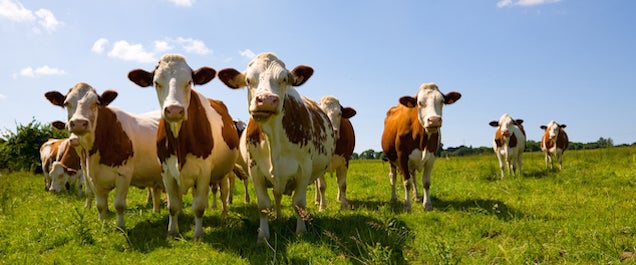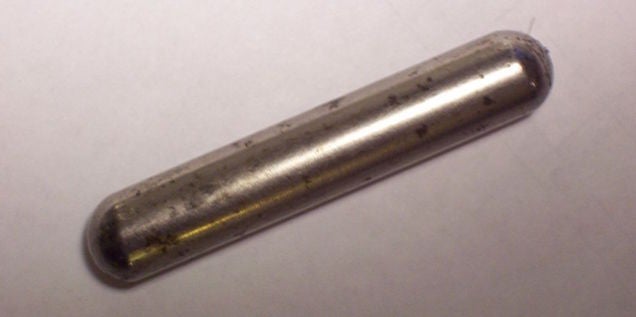Debunking The Alleged Ability Of Cow Magnets To Increase Automobile Mileage
If You Want Healthy Cows, Feed Them Magnets
Dairy farmers routinely feed their cows a finger-sized magnet, which settles in the digestive tract to help keep the cows healthy. Wait what? This is no bizarre homeopathy, but rather a legitimate treatment for a stomach-churning ailment called "hardware disease."
The problem arises because cows don't chew before swallowing. Of course, cows do famously spend pretty much all their time chewing cud, semi-digested food that is regurgitated from the stomach. When they're ripping up fresh hay or grass, though, they swallow large portions with barely any chewing. Food, along with whatever nails, tacks, baling wire, and other stray pieces of metal are hiding it, go right down.
All this metal eventually collects in the reticulum, the second of four stomach chambers. Here, it can became hardware disease. Sharp pieces can poke through the stomach and into the heart, which is separated only by the soft muscle of the diaphragm. In slightly less terrible situations, digestion is blocked, and the cow swells up to a shape likened to a "papple," half pear, half apple.
Cow magnet. CC/Wikimedia Commons
That's where magnets come in. A magnet about the size and shape of a finger is placed inside a bolus gun, essentially a long tube that ensures the magnet goes down the cow's throat. Then it settles in the reticulum, collecting any stray pieces of metal. The magnets, which cost a few bucks a pop, can also be placed preventatively. To check if a cow already has a magnet, farmers use a compass.
Bizarre as the idea of a permanent stomach magnet may be, it's very necessary. One report, from the 1990s, found that 55 to 75 percent of all slaughtered cows had hardware in their stomachs. Our landscapes are littered with stray pieces of metal, and sometimes, horrifyingly, they end up in our cows. Luckily, this low-tech magnet solution can work wonders.



No comments:
Post a Comment